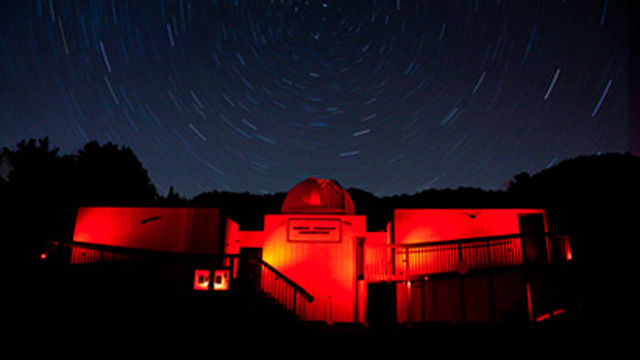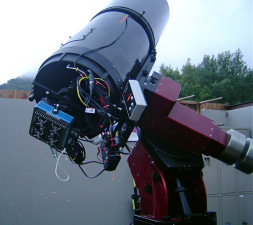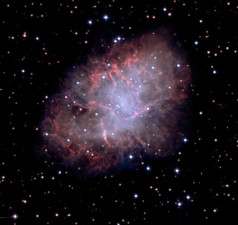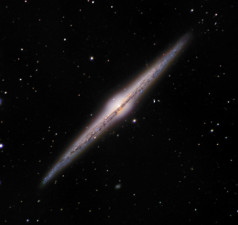Sonoma County Observatory Initiates Newcomers Into Mysteries of the Night Sky

Sonoma County Observatory Initiates Newcomers Into Mysteries of the Night Sky
Stargazers and astronomy buffs in Sonoma County have a well-kept secret: the Robert Ferguson Observatory, nestled inside Sugarloaf Ridge State Park in Kenwood. At least once a month, it opens its telescopes for public star parties.
On a chilly night at the observatory, several hundred people line up to look at the moon, stars and galaxies. The building is small; it looks and feels like a portable classroom, with thin walls and creaky floorboards. But there are some powerful telescopes that can see some very distant objects. And volunteer docents, such as Steve Smith, know a lot about those objects.
“With this telescope we look at globular clusters, which are big spheres of stars orbiting the center of the Milky Way, ” Smith explains.
The observatory isn’t part of a well-funded science center or university. It’s a nonprofit. And it is run entirely by volunteers -- 140 of them. George Loyer is one of the observatory’s founders.

"We all just do this because we love to do it," Loyer says. "And we try to infect other people with that love."
He says it's an approach that reflects the sentiment of the observatory’s namesake, Robert Ferguson, who started the Striking Sparks program almost 30 years ago. The program is a branch of the Sonoma County Astronomical Society, and it gives away telescopes to local kids.
Ferguson helped launch the construction of the observatory, which was built by volunteers and completed in 2003. Today volunteer docents give lectures and man the telescopes. They also teach a series of "Night Sky Classes" -- and use the observatory’s equipment to conduct research for professional astronomers. Volunteers range in age from about eight to 80.
Triana Elan has been a docent for about a year.

"I’ve been an amateur astronomer all of my life," Elan explains. "And so I’m in heaven up here."
She recently moved to Sonoma County from Washington state. The observatory, she says, was one of the things that drew her here.
"What I really enjoy is bringing the stars down to people and having them engage with what’s above them," Elan says. "If somebody sees Jupiter for the first time, for instance. You just stand there and say, 'Go ahead and look through the scope.' They’ll look through it and they’ll see its moons and they’ll cry. Or they’ll say, 'That’s so awesome!' "
Steve Smith became a docent in 2008 after taking a year of Night Sky Classes.

"A lot of the volunteers here started that way," Smith says. "They took the classes here and just wanted to keep coming. Not just because of astronomy, but because of the place itself and the people that are here."
"It’s a way to put everything -- no offense -- but put everything on the news aside," Elan adds, "and do what people have been doing for millions of years: looking up."
And it doesn’t seem to matter where you look, Elan says. Wherever you point the telescope, there’s something going on.
